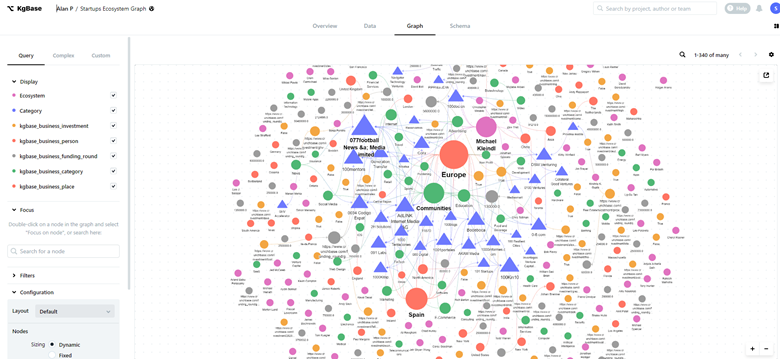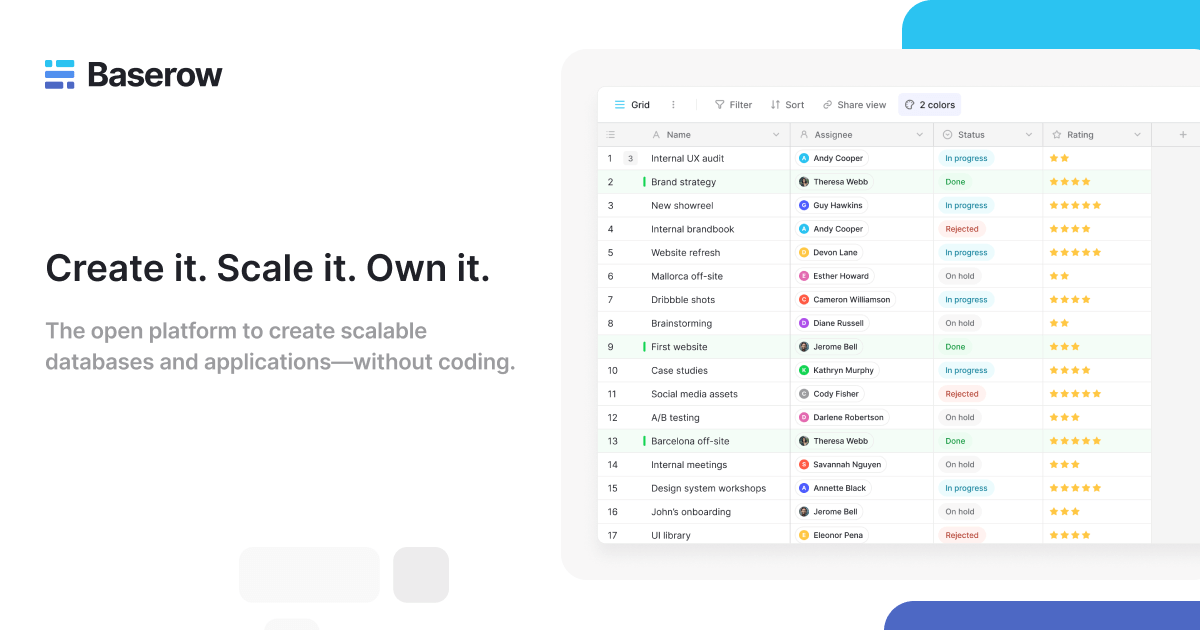No-Code Platforms for Open System Database Creation: Conserve Time and Resources
No-Code Platforms for Open System Database Creation: Conserve Time and Resources
Blog Article
Exploring the Benefits of Scalable Data Sources That Require No Coding Skills for Reliable Information Administration Solutions
The emergence of scalable databases that get rid of the necessity for coding abilities provides a transformative possibility for companies looking for effective data monitoring solutions. By allowing non-technical users to harness the power of data with intuitive user interfaces, these systems enhance availability and foster partnership across diverse teams. Furthermore, their cost-effectiveness and flexibility to advancing service requirements can considerably enhance operational processes. As we take into consideration the ramifications of such improvements, it ends up being crucial to examine just how they can reshape the landscape of data management and drive sustainable growth in an affordable atmosphere.
Boosted Availability for Customers
Boosted accessibility for customers is an essential facet of scalable databases, making certain that data management systems are user-friendly and straightforward. In a period where data-driven decisions are extremely important, access enables a broader series of users, consisting of those without comprehensive technological competence, to involve with database systems properly. This democratization of information accessibility assists in improved collaboration throughout divisions, equipping workers to draw out understandings and make informed decisions.
Easy to use interfaces, such as aesthetic data and drag-and-drop features depiction, simplify complicated data communications. These enhancements reduce the knowing contour connected with typical data source monitoring, allowing users to focus on leveraging information instead of grappling with technical intricacies. Scalable data sources usually incorporate real-time analytics and customizable control panels, providing individuals with immediate insights customized to their particular requirements.

Cost-Effectiveness and Source Cost Savings
Efficient information administration not just depends upon access however likewise on cost-effectiveness and resource cost savings. Scalable databases created for users without coding abilities significantly minimize financial burdens normally related to typical data source administration systems. By getting rid of the need for specialized shows competence, companies can assign their sources a lot more efficiently, focusing funds on core service tasks rather than comprehensive training or working with competent personnel.
Additionally, these databases often utilize cloud-based services, which better decrease prices connected to equipment and upkeep. Organizations can scale their database solutions according to their requirements, preventing the expenses incurred from over-provisioning resources. This flexibility implies companies can adapt to transforming needs without incurring unneeded prices, causing significant long-term financial savings.
Additionally, straightforward user interfaces simplify information entry and management procedures, reducing the time invested on administrative jobs. This effectiveness translates into labor expense financial savings, permitting groups to concentrate on critical initiatives instead of regular upkeep. Generally, adopting scalable databases that call for no coding abilities promotes a more economical method to information management, making it possible for companies to optimize their resources while maintaining high degrees of functional efficiency.
Improved Partnership Throughout Teams

Furthermore, scalable databases promote seamless interaction among employee. With easy to use user interfaces that need no coding skills, workers can easily create, modify, and share reports or dashboards tailored to their next page details requirements. This democratization of information empowers non-technical customers to contribute insights, enhancing the collective environment.
In addition, these data sources support concurrent access, allowing multiple users to function on the very same dataset at the same time. This attribute enhances efficiency, as groups can involve in joint information evaluation without the threat of version control concerns. The capacity to leave remarks or notes straight within the database better advertises dialogue and makes clear information interpretations.
Streamlined Data Management Processes
In today's data-driven atmosphere, organizations acknowledge the necessity of streamlined data management processes to optimize performance and accuracy. By leveraging scalable databases that call for no coding skills, companies can simplify their information handling and decrease the complexities typically connected with typical data source systems. This ease of access empowers non-technical customers to involve directly with data, promoting quicker decision-making and lowering dependence on specialized IT workers.
Streamlined information management procedures improve process by automating routine jobs such as data access, recognition, and reporting. Automated data integration makes sure that details from different resources is aggregated effortlessly, removing silos and promoting a merged view of vital organization metrics (no-code). In addition, user-friendly user interfaces enable personnel to control information conveniently, enabling them to generate insights that drive critical efforts without the need for extensive this post training.
This performance not only increases functional processes yet likewise minimizes the capacity for human error, guaranteeing that information continues to be precise and reputable. Ultimately, structured data management procedures via scalable databases lead to improved performance, enabling companies to concentrate on core tasks while guaranteeing that their data administration techniques are effective and reliable.
Scalability for Expanding Organizations

For increasing business, the ability to scale up or down is vital. A scalable database can manage an influx of data generated from new consumers, products, or services, ensuring that company operations stay undisturbed. These databases provide the capacity to manage peak lots effectively, which is important throughout periods of quick growth or seasonal spikes.
In addition, numerous scalable data source options are designed with straightforward user interfaces that require no coding abilities, equipping non-technical staff to take care of data properly (no-code). This democratization of data monitoring enables organizations to allot resources strategically and reduce dependence on specialized IT personnel
Inevitably, adopting a scalable data source not only boosts functional effectiveness but also cultivates a setting where services can introduce and advance without the restrictions of traditional data source systems. This versatility settings companies for long-term success in today's competitive landscape.
Final Thought
In conclusion, scalable data sources that require no coding abilities give significant benefits for efficient data administration. These systems improve ease of access for non-technical customers, decrease operational expenses, and advertise cooperation across groups. By enhancing data administration procedures and offering scalability for expanding organizations, such services make it possible for organizations to adapt to transforming needs effectively. Ultimately, the adoption of these easy to use data sources fosters innovation and positions companies for long-lasting success in a dynamic atmosphere.
Enhanced accessibility for users is an important element of scalable databases, ensuring that information administration systems are user-friendly and easy to use.Straightforward user interfaces, such as drag-and-drop attributes and aesthetic data depiction, simplify complex information communications. In general, adopting scalable data sources that need no coding skills fosters an extra cost-efficient technique to information monitoring, allowing companies to optimize their resources while keeping high degrees of functional effectiveness.
By leveraging scalable databases that require no coding abilities, companies can simplify their data handling and minimize the intricacies usually associated with typical data source systems - no-code.Streamlined information administration processes boost operations by automating visite site routine jobs such as data entry, recognition, and coverage
Report this page